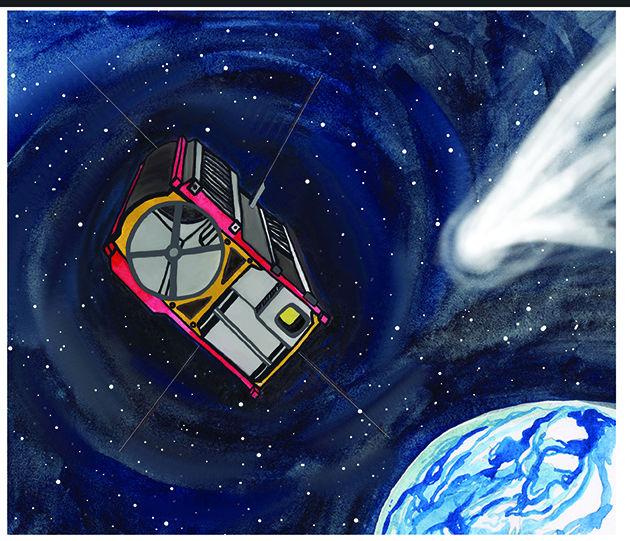Hollywood movies such as “Armageddon” love to examine the desperate measures necessary to stop asteroids from crashing into the Earth. Despite how far off Hollywood’s story lines often seem, researchers are working across the globe to ensure such an event never occurs.
One such researcher is A&M aerospace professor David Hyland, who leads a project titled the “Near Earth Asteroid Detection System,” which aims to use a system of 20 CubeSats — tiny satellites popular for their relatively cheap cost — to detect, track, and categorize asteroids in near earth orbit. Only one percent of near-Earth asteroids are known and tracked, yet many of them could pose a significant threat to the planet — an unlikely scenario that has nevertheless led to destruction such as the dinosaurs’ extinction.
It is not impossible to imagine Hyland’s research could one day save the world. Kevin Krisciunas, astronomy professor, said even small asteroids just three miles across can have a significant impact.
“A small asteroid that size is 300,000 times more powerful than the biggest bomb humans have ever exploded,” Krisciunas said.
Krisciunas said from an international perspective it is important to track asteroids so that if one does hit Earth, countries do not mistake the impact for a nuclear strike.
“One item of international security is we have to keep track of these things so we can tell nuclear armed countries not to have such an itchy trigger finger,” Krisiunas said. “That there could be a natural explanation why some tremendous destructive thing happened somewhere in their country.”
Hyland’s project hopes to one day mitigate these threats. The CubeSat formation he proposes will seek asteroids ranging from 40-140 meters in diameter, the size of a good-sized building.
Hyland said his CubeSats will use photodetectors to note the time that an asteroid passes in front of a star it is pointed at. These detectors will take note of the dip in starlight, and data on the asteroid can then be derived by comparing the data taken from the different CubeSats in orbit.
The first phase of the three-phase project will be to demonstrate the technology that would allow 20 CubeSats to detect and categorize an asteroid as well as work together in formation, Hyland said.
Hyland said eventually the project will use bigger telescopes to examine a much greater area of space to detect and track a significant number of asteroids, and their characteristics, than is currently possible.
“You get an estimate of how big the object is, an estimate of the distance to the asteroid, you got the angular velocity, tangential velocity,” Hyland said. “After two observations, you can calculate a first solution for its orbit.”
Steven Post, aerospace engineering senior, said getting satellites to cooperate is tougher than people think.
“When you are on the ground here everything is fixed, you drop a ball it falls on the ground,” Post said. “Up there everything is free, to a certain extent. It is very temperamental, very hard to kind of orient where you want to go and how accurately you can do it.”
Krisciunas said if you know an asteroid is going to hit the Earth there are ways we could respond beyond Hollywood’s atomic weapons solution.
“A much simpler plan is if you have enough lead in time, you could send some astronauts up there,” Krisciunas said. “They could boogie on down there and attach a very small rocket motor to it and you back off and turn on the rocket motor and modify the orbit of the asteroid and it doesn’t hit the Earth.”
The average person should not worry much about asteroids hitting the Earth, Krisciunas said.
“How often does something five or 10 miles in size hit the earth?” Krisciunas said. “That only happens every 10 or 100 million years. So should a person worry about this? Not very much.”























